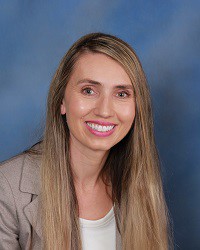A $4 million grant from UnitedHealth Group is helping the University of California to build a more diverse child and adolescent psychiatry workforce.
Announced in 2020, the UC San Diego School of Medicine launched the Child and Adolescent Psychiatry Inclusive Excellence Program (CAPIE) to expand the state’s mental health workforce with inclusivity and diversity. CAPIE provides learning opportunities, mentorships, preclinical courses, and financial support for participating medical students.
Part of UnitedHealth Group, Optum Behavioral Health Solutions Senior National Medical Director Dr. Yusra Benhalim said in a survey done by UCSD, 87% of students engaging in the CAPIE program were more likely to pursue child and adolescent psychiatry as their specialty in medicine.
“We are very excited to see that is a very big number and I am excited to see how we can have an impact on getting more and more students excited, engaged, and committed to entering this particular field,” she said.
Benhalim said when thinking about the importance of access to mental healthcare, the conversation has turned towards this vulnerable population.
“Which is young people. Children, adolescents, and then different populations within,” she said. “What are the struggles? What are the challenges that they are facing as they are continuing to develop. As they are trying to create their identity. And as the world around them is continuing to change at a very rapid pace,” she said.
Teen suicide rate increased 29% at the national level between 2012-2014 and 2018-2020. Anxiety among children increased 23% between 2017-2018 and 2020-2021, while depression increased 27% according to the 2022 America’s Health Rankings Health of Women and Children Report.
“This is a population near and dear to my heart because I know that they are trying their best, and yet, sometimes when we think of solutions, we are looking at them from the perspective of adults,” said Benhalim. “What I love about this grant and this program it is going upstream as far as possible to say how can we get future students and future doctors really excited about going into a field dedicated in working with children and adolescents who are experiencing mental health symptoms, challenges, and conditions.”
Benhalim said child and adolescent psychiatry is not typically heard about in medical school or residency, saying as a medical student she only met one child psychiatrist.
“I was in awe of her,” she said. “She was the first person who helped me see this incredible calling. But I was also in awe of her because she was the only child psychiatrist for the entire west Texas region. I was surprised to see that there was only one child psychiatrist to serve this one large part of Texas.”
Benhalim said this program not only thinks about expanding the workforce itself, and the conversation is starting the conversation much earlier that child and adolescent psychiatry exists, is a specialty, has the “power to impact young people who are vulnerable and much in need.”
“It gets people motivated and excited to actually be part of that solution, and to be part of making that change” she said. “We talk a lot about mental health with adults. I think we have reduced stigma, but the stigma for young people is different. Not only does this program get people into the workforce, it also focuses on diversity and inclusivity. When we think about ways we can connect with young people, we must open the box of meeting them where they are. Diversity is essential to that.”
Benhalim said youth need to see that there are healthcare providers, therapists, psychiatrists, social workers, who will understand who they are, their lived experience, share cultural backgrounds, ethnic backgrounds, speak the same language.
“This program addresses the size of the workforce, but it is extremely intentional about diversity and ensuring we have healthcare providers who will really meet the needs of a youth population,” she said. “That is essential to be able to reduce stigma. Helping young people they can raise their hand and that they can connect with someone who is culturally competent and understand who they are and what they need.”
UCSD Child and Adolescent Psychiatry Inclusive Excellence program director Dr. Desiree Shapiro said building workforce, addressing public mental health, creating culturally affirming care spaces for youth is what the grant was aimed to achieve.
Shapiro said a Call for Proposals from UnitedHealth Group looked at the workforce, how to better serve the community, and creating a workforce that represents the community it serves, with an emphasis on quality mental healthcare.
“It was a perfect opportunity to incorporate training future physicians, thinking about their wellbeing and how their wellbeing really matters in sustaining them in this career and engaging with the community,” she said. “It was a wonderful opportunity to create something new. A novel program that offers many learning opportunities, personalized mentorships, sponsorships, financial support. Thinking about the exposure to child and adolescent psychiatry in medical school is not well covered. I did not get exposure until my fourth year. Earlier exposure, earlier opportunities to fall in love with child and adolescent psychiatry, and to build connections to the communities that these future physicians may serve is extremely valuable. Many of the scholars are doing projects with youth in their own community in mind. Thinking about minoritized populations, stigma, barriers to care, and on the other side what are innovative solutions to that. How can we better meet the needs of youth and their families and their communities.”
Shapiro said her “hopes” are for this program to continue to grow and offer more workforce programs like this one throughout California.














